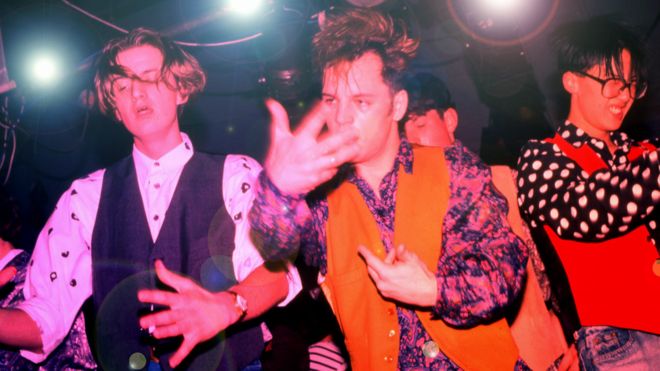
Manchester’s Hacienda nightclub has gone down in history as the epicentre of ecstatic youth culture in the 80s and 90s. The club was demolished 15 years ago. But its contents – from the dancefloor to the urinals – were saved.
At the site of the Hacienda in Manchester, the only remaining evidence of the club is its name.
Hacienda Apartments is a block of smart flats that stands where 1,500 people used to gather every night during the hedonistic acid house explosion in the late 80s and early 90s.
But despite being knocked down, the club has not quite disappeared without a trace.
The fixtures and fittings were salvaged and sold at auction in 2000. Now, a documentary has tracked many of them down.
Archive footage of late Hacienda and Factory Records boss Tony Wilson opens the film, titled Do You Own The Dancefloor, which is being screened in Manchester on Saturday.
We see him declaring that “nostalgia is a disease”. Wilson argued that the building should not be preserved, and that erecting flats in the city centre was more important. “Nostalgia is unnecessary,” he said. “People know it happened.”
But if nostalgia is a disease, then many Hacienda veterans are terminal cases.
One of the club’s (unwashed) urinals has been converted into a Madchester shrine, four bollards that once ringed the club’s stage now guard an allotment and one of the girders forms part of a recording studio desk.
The director with a precious plank
First-time film-maker Chris Hughes was not a Hacienda diehard, but went “a couple of times in the pre-rave years”. He went to the auction in 2000, he says, “just to see what happened”.
“It was amazing just to see how passionate people were. That imprinted on my brain.”
And it was still on his mind when he began looking for a subject for a documentary.
That was more than five years ago. He has now completed the film, which will raise money for two charities, Kidneys For Life and Cancer Research.
Lots of the Hacienda faithful have stayed in Manchester, while others have taken rave relics to places from Miami to Montreal.
“I found a lot of people want to move on and do new things,” Hughes says. “But as soon as you give them the opportunity to talk about the Hacienda, they’re off, because it’s one of the happiest times of their lives. Everyone we spoke to wanted to reminisce.”
At the auction, Hughes purchased a piece of dancefloor. “As I leave my house in the morning, I’ve got my coat rack on the left and above that is my bit of the Hacienda floor, in pride of place,” he says.
“Sometimes I touch it on the way out, sometimes I just look at it. I change my mind as to what I think about it.
His opinion swings, he says, from thinking “it’s just a piece of wood, why is it varnished on the wall… to, that’s amazing, think of all the people that have danced on it. It’s part of history, that”.
The great unwashed urinal
Mike Shepherd did not go to the auction – but asked a friend to buy something for him. “I told him, ‘Just get something unusual.’ And that’s what I got.”
What he got was a stainless steel urinal. Mr Shepherd went to the Hacienda “in the very early days”, before the rave scene kicked off, and now collects memorabilia from Manchester’s music scene.
He has converted the urinal into a display cabinet to store his other Hacienda relics, adding glass shelves, drawers, the Hacienda’s yellow and black stripes and lights that change colour to music.
But there is one thing he has not done – cleaned it. “I was going to polish it all, but I thought it would be a shame because it is quite stained,” he says. “It adds to it. It adds to the authenticity.
“We did take the trap off it to see if someone might have thrown any drugs down it. But there was nothing in it.”
Peter Hook’s recycled dancefloor
Former Joy Division and New Order bassist Peter Hook co-owned the Hacienda and, when the club’s contents were sold, he was auctioneer.
“It was like a big reunion,” he says. “It was the first time many of us had got together since the Hacienda closed, so it was quite joyous.
“And to see the importance that people put on these crazy items – the urinal and the door and all this stuff – it was quite humbling to be honest.”
Hook himself owns items from bricks to stained glass windows. Five years ago, he created a range of limited edition bass guitars using strips of dancefloor.
“With the amount of perspiration and inspiration that had dripped onto the floor in that place – in particular the amount of music that dancefloor had soaked up – it was perfect to use it as a guitar neck,” he says.
“The wood was untreated so [it showed] every little nick and high heel stamp. It was like a living sculpture. To keep that and give it a new life, I thought, was wonderful.”
The blooming bollards
Trevor Johnson designed flyers, posters and merchandise for the Hacienda. A friend asked him to look after four of the traffic bollards that used to stand on the edge of the stage – but he never picked them up.
So his wife, also a former Hacienda regular, decided to install them among the chard and artichokes in their allotment in Greater Manchester.
“She just thought, rather than them being abandoned, they should have a home where they’d be cared for a bit more,” he says.
“She put them down here. So she’s back in the club again when she’s tending the pears, or whatever. Whether she dances down here when it’s quiet, I’m not quite sure. It wouldn’t surprise me.”
Some other bollards were used in a recreation of the Hacienda at the V&A museum in London in 2012. While fondly remembering the “unique” venue, Mr Johnson says they do not worship their artefacts like some people do.
The Hacienda and Factory Records fit into a long tradition of creative and industrial invention in Manchester, which is still going on today, he adds.
The dancefloor down under
When Ian Bowker moved to Sydney three years ago, his piece of Hacienda dancefloor went with him. “I’ve still got a bit of Manchester with me, on the wall,” he says.
Mr Bowker bought a strip of dancefloor, had it cut into squares and distributed them to friends from the Hacienda heyday.
“Before I got it framed, I used to take it out with me. I’d have this piece of wood in my pocket. I might have gone to another club, but I’d still have bit of Hacienda with me. Bit crazy really isn’t it?”
Mr Bowker got into the rave scene in the early ’90s, he says. “Even at the time, you knew it was special, that you were part of something unique, and you knew it probably wasn’t going to last forever.”
Do You Own The Dancefloor is being screened at the Royal Northern College of Music on Saturday 15 August.
Via The BBC

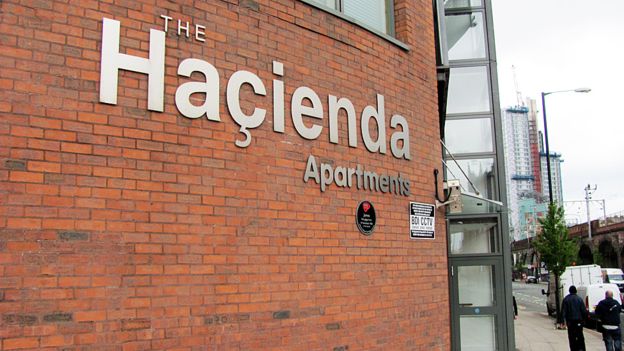
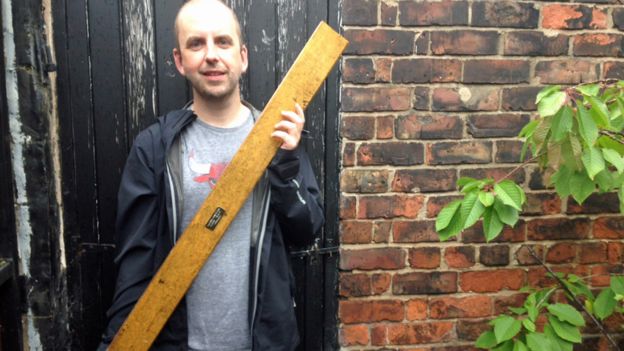
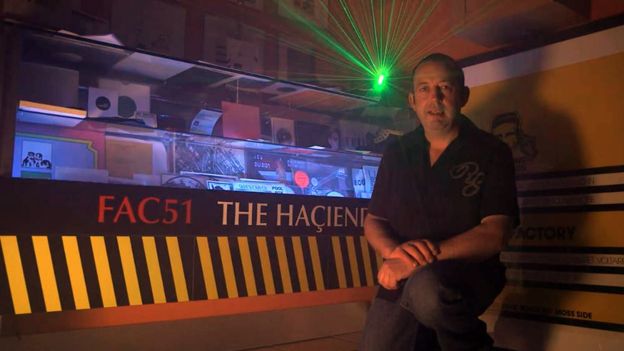
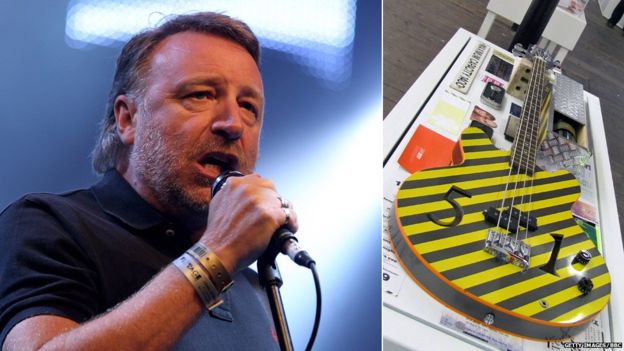
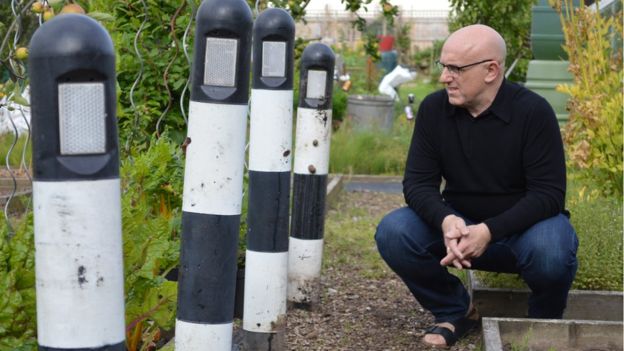
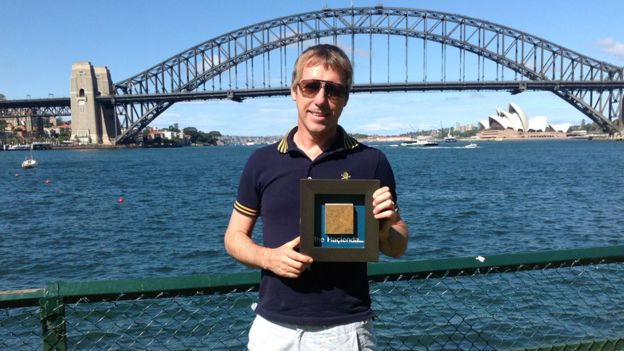


Be the first to comment